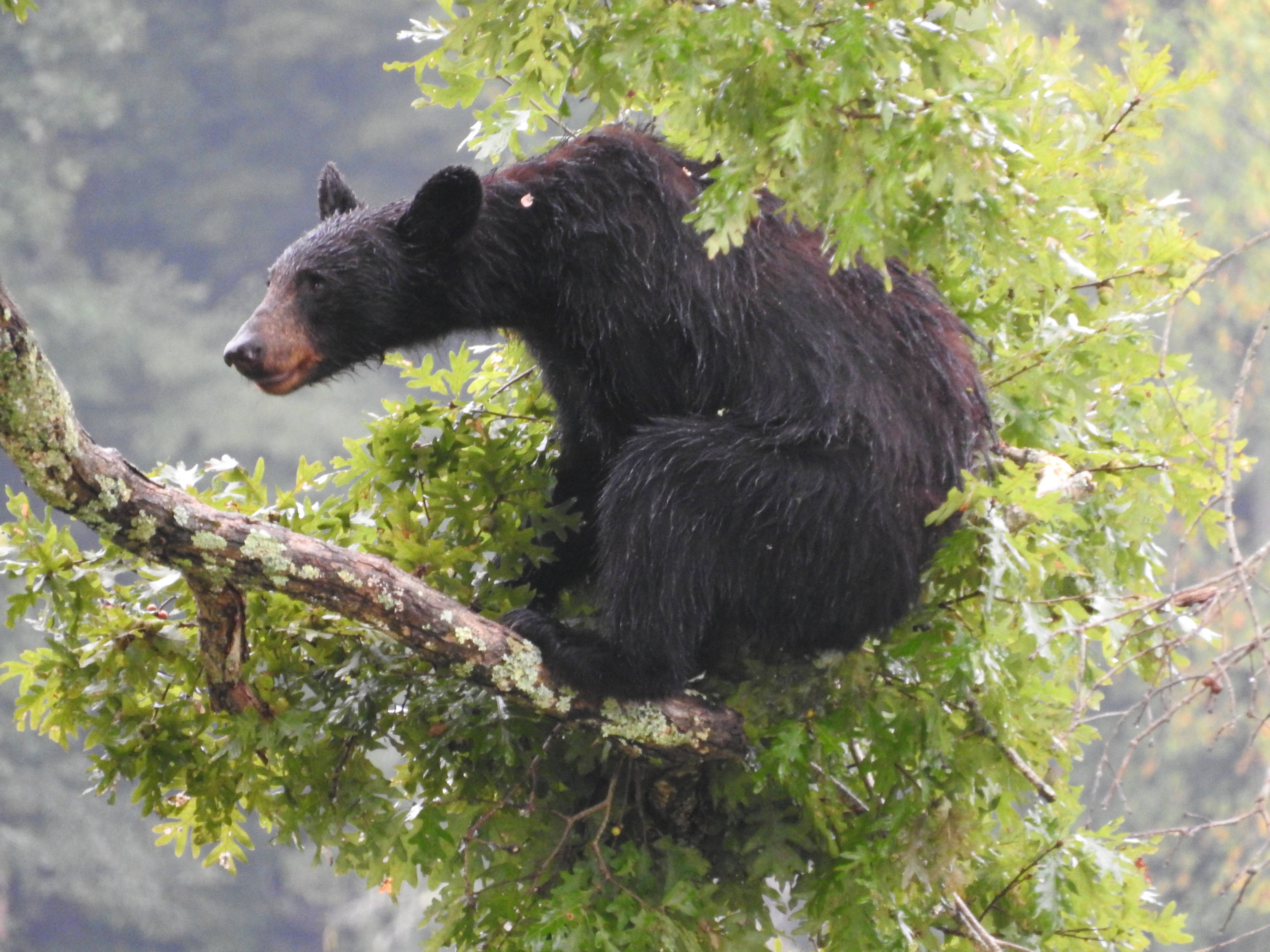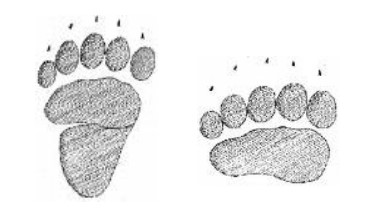As spring begins with snowmelt, and color comes back to the landscape, wildlife become increasingly active. One to note is the American Black Bear (Ursus americanus). Depending on weather conditions, the black bear emerges from its den around late March – early April.
Females with cubs may emerge later between April – May. The hungry bears survive on their stored body fat from previous seasons and use their keen sense of smell to find carcasses of animals killed during the winter season. Then they move on to plants and grasses as they become readily available. As the temperature warms the area, their spring diet is made of mostly ferns, skunk cabbage, grasses, plants, and buds – oh, and the occasional garbage bin if accessible.

An American Black bear rests on a tree limb. Photo credit: Eileen Hornbaker, USFWS.
You can spot their tracks easily in the moist spring soil or in light snow cover. Bears have five toes, with the largest toe on the outside. This is opposite of a human. Because of this big toe location, their tracks are turned inward slightly for stability

Bear prints. Right hind print (Left). Right front print (Right).
Be on the lookout for these waking bears. They like a variety of habitats including swamps, dense forest, and recently logged areas. They can den almost anywhere that keeps them from direct weather. Bear dens can be as simple as a crevice between boulders, a hollow tree/log or under a brush pile or tree-top from a fallen tree. In the Catskills, it is common for black bears to den under large ledge rocks that overhang like in the trail cam video I caught in Greene County, NY.
It is quite rare, but a bear can also den unprotected with little to no shelter on the forest floor. So, it is very possible to stumble upon a den area nearby.
It is important to note, unlike other hibernating wildlife, bears fall into a deep sleep state called torpor. During torpor, a bear’s heart rate and breathing decreases and they maintain a near-normal body temperature which allows them to react quickly to disturbances. Other hibernators must raise their body temperature before reacting. Also keep in mind that the mother bear is protective of her young who are denning with her. Although the black bear breeding occurs June – July, the fertilized egg does not begin development until autumn, so the bear cubs are born in the den around the end of January – February when their chance of survival is greatest.
So, as you trek out into the woods this spring, remember that we share this woodland with our bear friends. Keep your eyes peeled for possible dens so as to not startle hungry waking bears emerging from their dens.
References:
- Berchielli, L; Stegemann, E. (October 2004). Black Bears in New York State. NYS Conservationist.
- New York State Dept. of Environmental Conservation. (Revised September 7, 2016). Hunting the Black Bear in New York. NYSDEC





